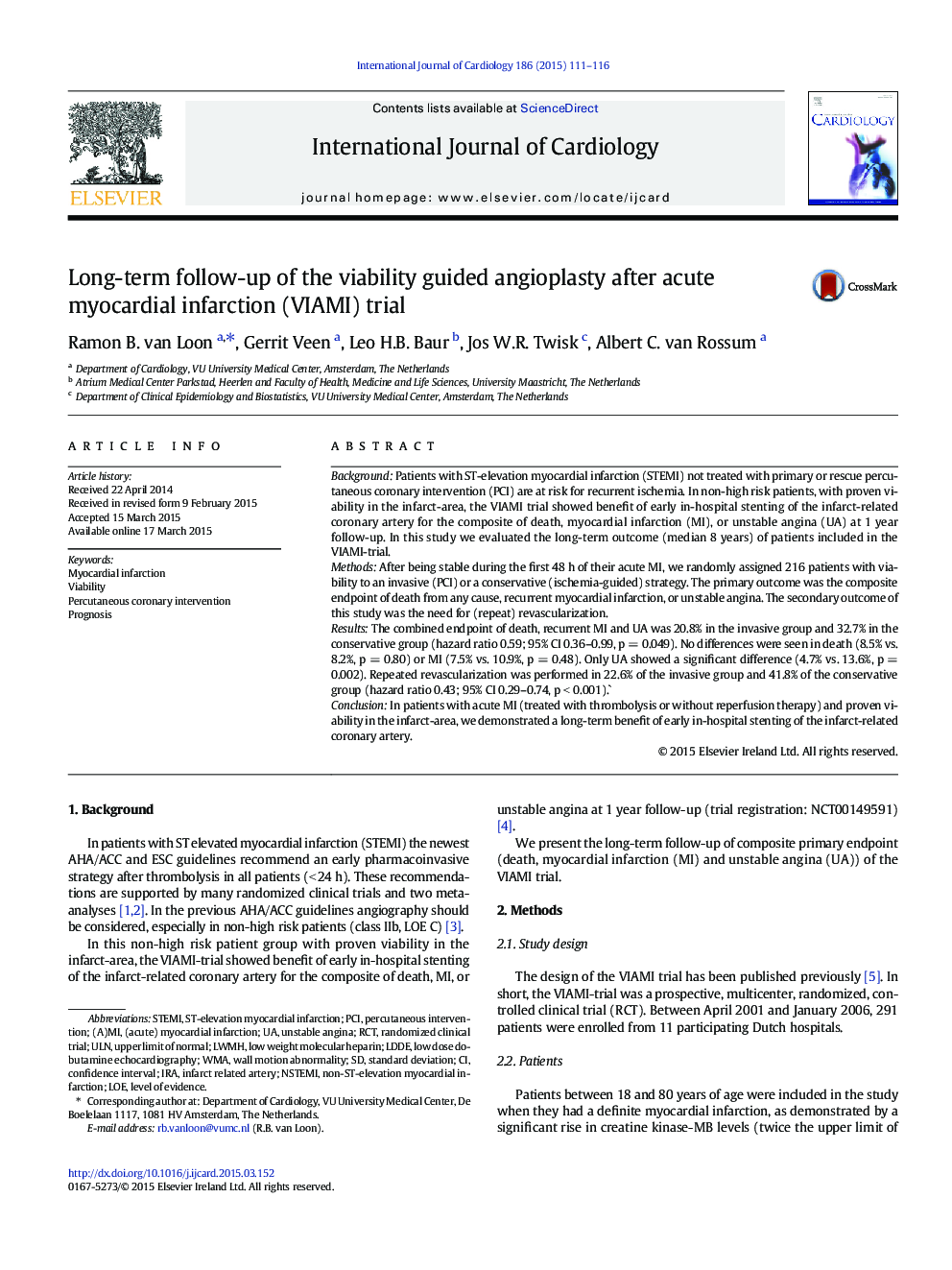| Article ID | Journal | Published Year | Pages | File Type |
|---|---|---|---|---|
| 5967654 | International Journal of Cardiology | 2015 | 6 Pages |
â¢Long-term follow-up of the VIAMI trial is evaluated.â¢A randomized clinical trialâ¢Viability-guided percutaneous intervention after acute myocardial infarctionâ¢Only in stable patients treated with thrombolysis or without reperfusion therapyâ¢Long-term benefit of early in-hospital stenting of the infarct-related vessel
BackgroundPatients with ST-elevation myocardial infarction (STEMI) not treated with primary or rescue percutaneous coronary intervention (PCI) are at risk for recurrent ischemia. In non-high risk patients, with proven viability in the infarct-area, the VIAMI trial showed benefit of early in-hospital stenting of the infarct-related coronary artery for the composite of death, myocardial infarction (MI), or unstable angina (UA) at 1 year follow-up. In this study we evaluated the long-term outcome (median 8 years) of patients included in the VIAMI-trial.MethodsAfter being stable during the first 48 h of their acute MI, we randomly assigned 216 patients with viability to an invasive (PCI) or a conservative (ischemia-guided) strategy. The primary outcome was the composite endpoint of death from any cause, recurrent myocardial infarction, or unstable angina. The secondary outcome of this study was the need for (repeat) revascularization.ResultsThe combined endpoint of death, recurrent MI and UA was 20.8% in the invasive group and 32.7% in the conservative group (hazard ratio 0.59; 95% CI 0.36-0.99, p = 0.049). No differences were seen in death (8.5% vs. 8.2%, p = 0.80) or MI (7.5% vs. 10.9%, p = 0.48). Only UA showed a significant difference (4.7% vs. 13.6%, p = 0.002). Repeated revascularization was performed in 22.6% of the invasive group and 41.8% of the conservative group (hazard ratio 0.43; 95% CI 0.29-0.74, p < 0.001).`ConclusionIn patients with acute MI (treated with thrombolysis or without reperfusion therapy) and proven viability in the infarct-area, we demonstrated a long-term benefit of early in-hospital stenting of the infarct-related coronary artery.
